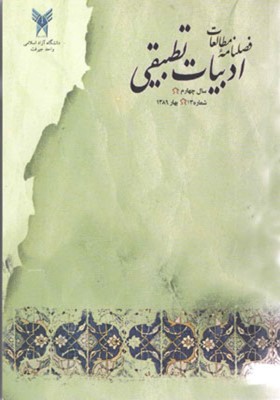بررسى تحلیلى تطبیقى سیاوش، اوزیریس و آتیس
محورهای موضوعی : شعر
1 - عضو هیئت علمی دانشگاه آزاد اسلامی واحد دشت ارژنه.
کلید واژه:
چکیده مقاله :
در داستان شفقت برانگیز و در عین حال نغز سیاوش در شاهنامه، فقط روساخت داستانارائه شده، اما بقایایى از اصل اسطورة بارورانة او همچنان در شاهنامه نمایان است. سیاوش درواقع خداى نباتى و بارورى ایران بوده که درپى جابه جایى و شکست اسطوره،در هیئت یک شاهزاده به حماسة ملى راه یافته است. در این جستار، ضمن بررسى تحلیلى تطبیقى سیاوش، اوزیریس و آتیس این نتیجه حاصل شد که خدایان مذکورخویشکارى هاى مشترکى داشته و در بسیارى از جهات هم گونند؛ به این ترتیب که هرسه خدا با طبیعت و سرسبزى آن رابطه اى مستقیم دارند، هرسه خدا الهه اى را (سودابه،ایزیس، سیبل) در کنار خود دارند که زمینه ساز مرگ و رستاخیز آنها (زمستان و بهار)مى شود و هر سال براى بارورى و سرسبزى بیشتر طبیعت، آیین مرگ و رستاخیز هر سهخدا در موسم سال نو برگزار مى شد.
In the passionate and poetic story of Siavash in “Shah Name” only the surface structure of the story could be observed although the remains of his fruitful original myth could be pointed out in the rest of “Shah Name”. Siavash is in fact the Iranian God of Fertility of the plants who has been represented as a prince because of his failure in the myth. The present article is an analytic comparison of Siavash with Osiris and Attis. The results of the research show that the mentioned gods have certain similarities. All three have direct relation with nature and its luxuriance. All three have a goddess with affiliated with them, namely Sudabeh, Isis and Sibil who prepare the ground for their death and resurrection (winter and spring). And every year this death and resurrection is repeated for more fertility of nature.


